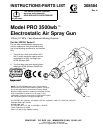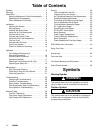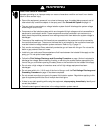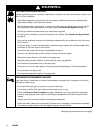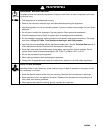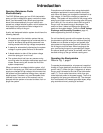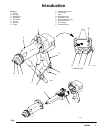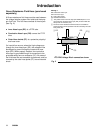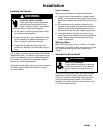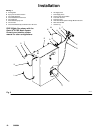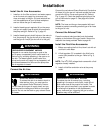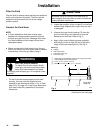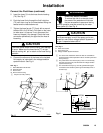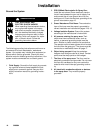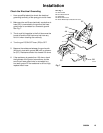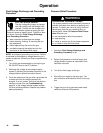6 308584
Introduction
Spraying Waterborne Fluids
Electrostatically
The PRO 3500wb spray gun is a 60 kV electrostatic
spray gun that is designed to spray conductive, water-
borne, non-flammable fluids. When spraying water-
borne fluids electrostatically, the gun must be con-
nected to a voltage isolation system, which isolates the
fluid supply from ground and allows voltage to be
maintained at the tip of the gun.
A safe, well designed isolation system should have the
following features:
D All components of the isolation system that are
charged to high voltage must be contained within a
fence or enclosure that prohibits personnel from
making contact with the high voltage components.
D A means for automatically discharging the system
voltage if anyone opens the fence or enclosure.
D A bleed resistor to drain off the system voltage
when the spray gun is not in use.
D The system should not have any severe arcing
occurring when the isolation mechanism opens and
closes. Severe arcing will shorten the life of the
system components.
When connected to a voltage isolation system, all of
the fluid in the spray gun, fluid hose, and isolated fluid
supply are charged to high voltage, which means that
the system has more electrical energy than a solvent-
based system. Therefore, only non-flammable fluids
(defined on the front cover of this manual) can be
sprayed with the system or be used to clean, flush. or
purge the system.
Precautions must be taken when using electrostatic
waterborne equipment to avoid potential shock haz-
ards. When the spray gun charges the isolated fluid to
high voltage, it is similar to charging a capacitor or
battery. The system will store some of the energy while
spraying and retain some of that energy after the spray
gun is shut off. It is not safe to touch the front end of
the gun until the stored energy is discharged. The
amount of time it takes to discharge the energy de-
pends on the system design. Follow the Fluid Voltage
Discharge and Grounding Procedure, page 16,
before approaching the front of the gun.
Do not intentionally ground out the system by arcing
the electrode to ground when you are done spraying.
Sudden arcs or shocks to the gun and system puts
extra stress on the components and will shorten the
life of the gun and fluid hose. When hanging up the
gun, avoid arcing the gun to a grounded gun hanger.
An optional plastic gun holster is available, which can
be used to hang up the gun without causing arcs.
Operating the Electrostatics
Refer to Fig. 1, page 7
To operate the electrostatics, air pressure is supplied
through a Graco electrically conductive air hose to the
gun air inlet (F). When the gun is triggered, air enters
the gun and is directed to the inlet of the turbine/alter-
nator (T). The air spins the turbine, which then pro-
vides electrical power to the power supply. The fluid is
charged by the spray gun electrode (B). The charged
fluid is attracted to the nearest grounded object, wrap-
ping around and evenly coating all surfaces.



